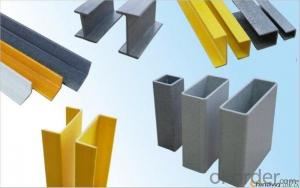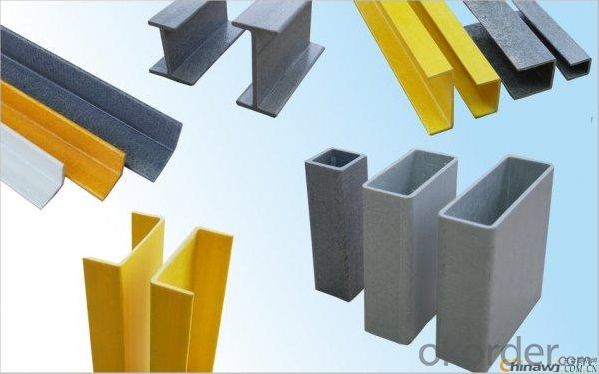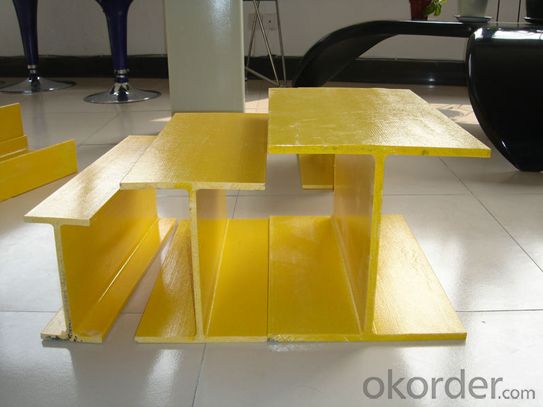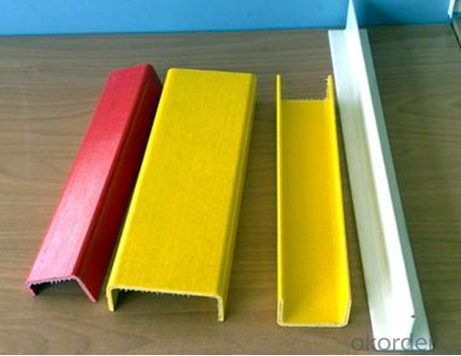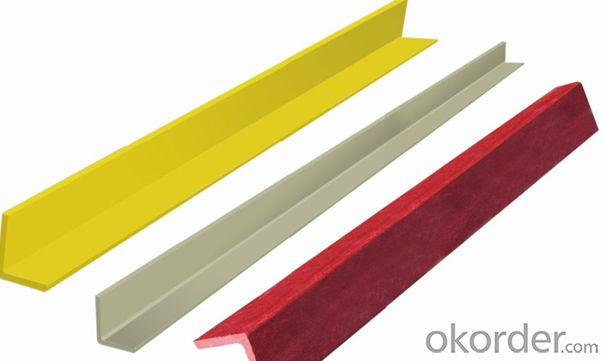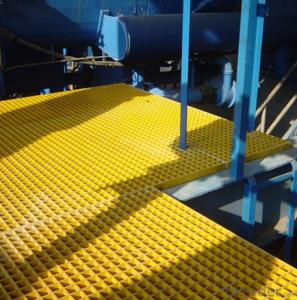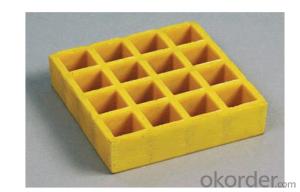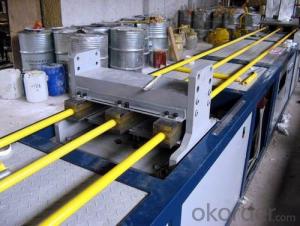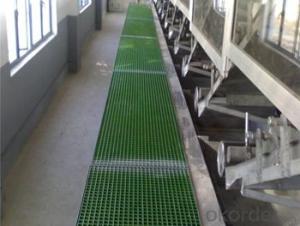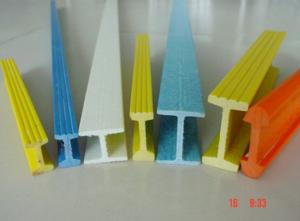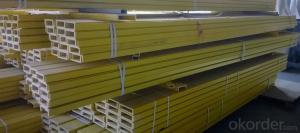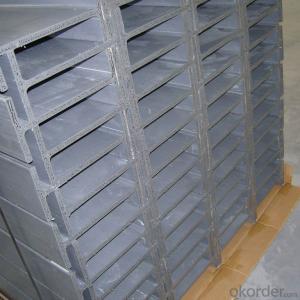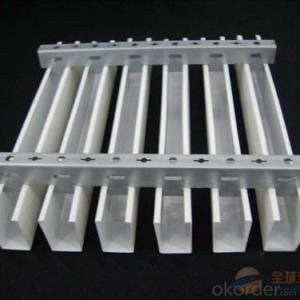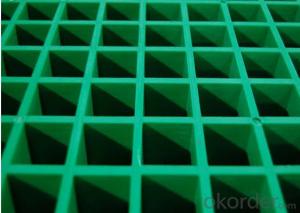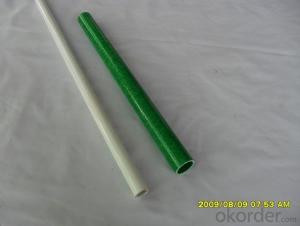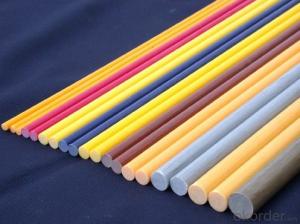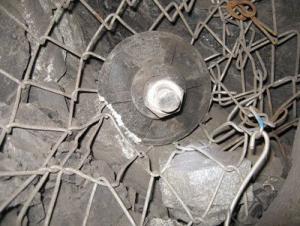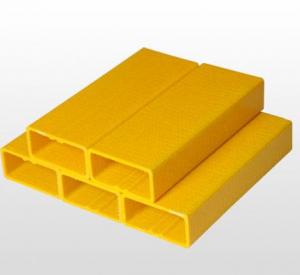FRP Pultrusion Profiles C Shape for Ladder
- Loading Port:
- Shanghai
- Payment Terms:
- TT or LC
- Min Order Qty:
- FRP Profile "C" Shape,For Ladder m.t.
- Supply Capability:
- 20000m m.t./month
OKorder Service Pledge
OKorder Financial Service
You Might Also Like
Product description of FRP Grating
FRP Grating, Molded FRP Grating, Fiberglass Grating, GRP Grating,GRP Molded Grating,FRP Pultrusion Grating, FRP Mini Mesh Grating,Trench Grating, Drain Grating,Grating Walkway, Platform Grating...
Comparing with other floor materials, FRP molded grating provides a series of benefits, unmatched impact resistance,
while the strength-weight-ratio is only one-fourth of that of steel grating. It is easy to cut and install.
Specification of FRP Grating
Item | Thickness mm | Mesh Size mm*mm | Panel Size mm*mm | Weight kg/Square Meter |
01 | 15 | 38*38 | 1223*3660 | 7 |
02 | 15 | 50*50 | 1223*3660 | 6.5 |
03 | 25 | 25*100 | 1010*3010 | 12.4 |
04 | 25 | 19*19 | 1223*3660 | 12.5 |
05 | 30 | 19*19 | 1223*3660 | 21.5 |
06 | 30 | 38*38 | 1223*4040 | 15.1 |
07 | 38 | 19*19 | 1223*3660 | 22.8 |
08 | 38 | 38*38 | 1000*4040 | 19.5 |
09 | 38 | 38*38 | 1223*3660 | 19.5 |
10 | 40 | 40*40 | 1250*3690 | 19.3 |
11 | 50 | 50*50 | 1223*3660 | 21.5 |
Images
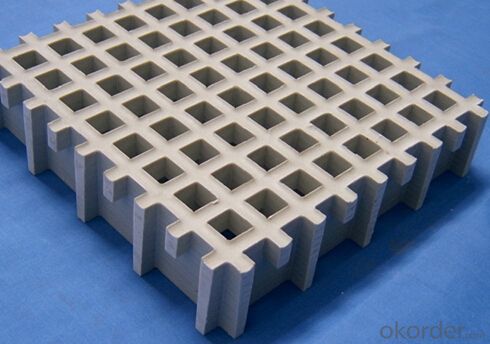
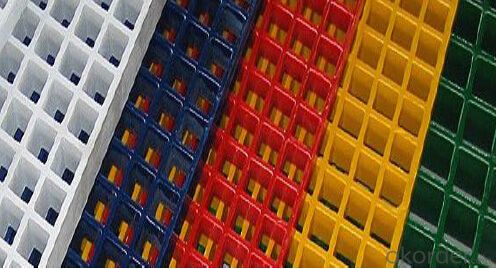
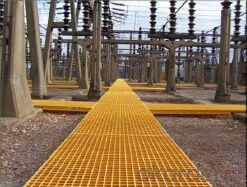
Features
1.Corrosion and Chemical resistant
2.Slip-resistant
3.High strength-to-weight ratio
4.Ergonomic
5.Low maintenance
6.Fire retardant
7.Easily fabricated and installed
FAQ:
1. Why Choose us?
CNBM is a stated own company, provide the guarantee for the best quality, best service and safety business.
2. How will we guarantee the quality?
a, ISO 9001-2008 quality control system;
b, Strict and regular quality control in production;
c, Inspeciation when loading into container before shippment;
d, Sample stock for one year for quality tracing and record.
3. Do you offer OEM service?
Yes, we can print customers’ logo on the packaging;
And the size and specification can be produced and design according to your demand.
- Q: Are FRP pultrusion profiles UV-resistant?
- FRP pultrusion profiles are known for their UV resistance. This is because they are made by combining reinforcing fibers, like glass or carbon, with a polymer matrix, such as polyester or vinyl ester. These materials naturally resist UV radiation, allowing FRP pultrusion profiles to endure long exposure to sunlight without significant deterioration or loss of mechanical properties. However, it's important to note that the UV resistance of FRP pultrusion profiles can vary based on the polymer matrix's type and quality used in their manufacturing. Thus, it is recommended to consult the manufacturer or supplier for detailed information regarding the UV resistance of specific FRP pultrusion profiles.
- Q: The difference between polyurethane pultruded profiles and glass reinforced plastic profiles
- Compared with other materials, pultrusion with polyurethane can produce a variety of benefits. The utility model can improve the content of the glass fiber in the product and greatly improve the strength of the product. For example, pultruded window frames made of glass fiber and polyurethane resin, the strength of the resulting window frames is 8 times higher than that of the PVC window frames, and the conductivity is 40 times lower than that of aluminum. Therefore, the insulation performance is much better.
- Q: Can FRP pultrusion profiles be used in the construction of swimming pool enclosures?
- Yes, FRP (Fiber Reinforced Polymer) pultrusion profiles can be used in the construction of swimming pool enclosures. FRP pultrusion profiles are known for their excellent strength-to-weight ratio, corrosion resistance, and durability, making them an ideal choice for outdoor applications like swimming pool enclosures. FRP pultrusion profiles are made by pulling fiberglass rovings through a resin bath and then through a heated die, resulting in a continuous profile of uniform shape and strength. This manufacturing process ensures that the profiles are strong, stiff, and lightweight, making them easy to handle and install. In the construction of swimming pool enclosures, FRP pultrusion profiles can be used for various structural elements such as beams, columns, trusses, and panels. These profiles can provide the necessary strength and support while also offering resistance to corrosion, moisture, and UV radiation, which are common challenges in a swimming pool environment. Additionally, FRP pultrusion profiles can be customized to meet specific design requirements, allowing for flexibility in creating unique and aesthetically pleasing swimming pool enclosures. They can be fabricated in a variety of shapes, sizes, and colors, making it possible to achieve the desired architectural look and feel. Overall, FRP pultrusion profiles offer a reliable and long-lasting solution for constructing swimming pool enclosures, providing the necessary strength, durability, and resistance to environmental factors. Their lightweight nature also makes them easier to handle and install, reducing construction time and costs.
- Q: Are FRP pultrusion profiles resistant to moisture absorption?
- FRP pultrusion profiles possess remarkable resistance to moisture absorption, primarily due to the composition of the materials used in their construction. These profiles typically consist of a combination of fiberglass and resin, wherein fiberglass is naturally non-porous and impervious to moisture, while the resin is specifically designed to repel moisture. The moisture resistance of FRP profiles is further enhanced by the pultrusion manufacturing process. This process involves pulling the fiberglass and resin through a heated die, ensuring thorough impregnation of the fibers with resin and creating a dense and solid structure. Consequently, the resulting product exhibits exceptional resistance to water penetration and moisture absorption. Additionally, the moisture resistance of FRP pultrusion profiles can be augmented through the application of protective coatings or surface treatments, such as gel coats or UV-resistant finishes. These coatings provide an extra layer of defense against moisture ingress. The superior moisture resistance of FRP pultrusion profiles makes them an ideal choice for applications that involve exposure to water or high humidity, such as marine environments, wastewater treatment plants, or outdoor structures. By preventing issues like rot, rust, or degradation commonly associated with materials like wood or metal, these profiles offer a reliable and durable solution that can endure moisture exposure without compromising their structural integrity or performance.
- Q: Are FRP pultrusion profiles resistant to weathering?
- Yes, FRP pultrusion profiles are highly resistant to weathering. The pultrusion process creates a strong, durable, and non-corrosive material that is inherently resistant to various weather conditions. FRP (Fiber Reinforced Polymer) profiles are composed of a combination of fiberglass reinforcements and a thermosetting resin matrix. This unique composition provides excellent resistance to UV radiation, moisture, chemicals, and temperature fluctuations, making them ideal for outdoor applications. FRP pultrusion profiles have been extensively tested and proven to maintain their structural integrity and physical properties even after prolonged exposure to harsh weather conditions. They do not degrade, warp, or crack due to sunlight, rain, snow, or extreme temperatures, unlike traditional materials like wood or metal. This weather resistance allows FRP pultrusion profiles to be used in a wide range of applications, including construction, infrastructure, marine, and transportation industries. Furthermore, FRP pultrusion profiles have a low thermal expansion and contraction rate, ensuring dimensional stability in fluctuating weather conditions. This characteristic prevents the profiles from warping or distorting over time, making them an excellent choice for long-term outdoor use. In summary, FRP pultrusion profiles are highly resistant to weathering and offer long-lasting durability in various outdoor environments. Their ability to withstand UV radiation, moisture, chemicals, and temperature fluctuations makes them a reliable and cost-effective solution for a wide range of applications.
- Q: Are FRP pultrusion profiles impact resistant?
- Yes, FRP (Fiber Reinforced Polymer) pultrusion profiles are known for their high impact resistance. The combination of strong reinforcing fibers and a polymer matrix makes them highly durable and able to withstand significant impact forces without breaking or deforming.
- Q: Are FRP pultrusion profiles resistant to fire?
- Yes, FRP pultrusion profiles are inherently fire resistant. The combination of the polymer matrix and the reinforcing fibers used in the pultrusion process provides excellent fire resistance properties, making them a suitable choice for applications where fire safety is a concern.
- Q: Can FRP pultrusion profiles be used in the construction of railway platforms?
- Yes, FRP (Fiber Reinforced Polymer) pultrusion profiles can be used in the construction of railway platforms. FRP profiles are lightweight, durable, and corrosion-resistant, making them suitable for various structural applications. They offer high strength-to-weight ratio, reducing the load on the platform structure while maintaining structural integrity. Additionally, FRP profiles can be customized to meet specific design requirements, providing flexibility in creating efficient and long-lasting railway platforms.
- Q: Can FRP pultrusion profiles be used in the construction of modular storage systems?
- Yes, FRP pultrusion profiles can be used in the construction of modular storage systems. FRP (Fiber Reinforced Polymer) pultrusion profiles offer several advantages that make them suitable for such applications. Firstly, FRP pultrusion profiles are lightweight yet extremely strong and durable. This makes them ideal for modular storage systems where weight is a concern, as they can provide structural support without adding excessive load. Additionally, their high strength-to-weight ratio ensures that the storage systems can withstand heavy loads and provide long-lasting performance. Secondly, FRP pultrusion profiles are corrosion-resistant. This is a crucial characteristic for storage systems, especially those used in outdoor or harsh environments where exposure to moisture, chemicals, or extreme temperatures can lead to corrosion. By using FRP pultrusion profiles, the storage systems can be protected against corrosion, ensuring their longevity and reducing maintenance requirements. Furthermore, FRP pultrusion profiles can be easily customized to meet the specific requirements of modular storage systems. They can be designed in various shapes, sizes, and configurations, allowing for flexibility in the design and construction process. This makes it easier to create storage systems that fit specific spaces and accommodate different types of items. Lastly, FRP pultrusion profiles offer excellent electrical insulation properties. This can be particularly beneficial in storage systems where electrical components or sensitive materials need to be stored. The insulation provided by FRP pultrusion profiles helps protect against electrical hazards and ensures the safety of the stored items. In conclusion, FRP pultrusion profiles are a suitable material choice for the construction of modular storage systems. Their lightweight yet strong nature, corrosion resistance, customization possibilities, and electrical insulation properties make them a reliable and efficient solution for this application.
- Q: Can FRP pultrusion profiles be used in wastewater treatment facilities?
- Yes, FRP pultrusion profiles can be used in wastewater treatment facilities. FRP (Fiber Reinforced Plastic) pultrusion profiles are known for their high strength, corrosion resistance, and durability, making them suitable for various applications, including in harsh environments like wastewater treatment facilities. These profiles can be used for constructing structures, such as walkways, handrails, grating, and tanks, as well as for reinforcing or replacing traditional materials, such as steel or concrete, in different components of the facility. The corrosion resistance of FRP pultrusion profiles ensures their longevity and reduces maintenance costs, making them a viable option for wastewater treatment facilities.
Send your message to us
FRP Pultrusion Profiles C Shape for Ladder
- Loading Port:
- Shanghai
- Payment Terms:
- TT or LC
- Min Order Qty:
- FRP Profile "C" Shape,For Ladder m.t.
- Supply Capability:
- 20000m m.t./month
OKorder Service Pledge
OKorder Financial Service
Similar products
Hot products
Hot Searches
Related keywords
